10 Beaches to Discover this Summer in Spain
Friday, May 30, 2025
The Summer is nearly here and the beach is the number one destination this time of year. However most people tend to think of the south of Spain or the Mediterranean coastline is the best place to visit, but Spain has fantastic beaches in every corner of its landmass, here are 10 great beach destinations that can be enjoyed all year round whichever corner of the country you choose to visit.. (the list is in geographical order, more or less, so not in order of greatness!)
1. Playa de Rodas, islas Cíes
.jpg)
This beach joins the islands of Monteagudo and Faro on the archipelago of the Cíes Islands. Its fine, white sand and crystalline emerald waters bring delight to anyone who visits it and encourages bathers to confront the cold sea. Next to the beach there are natural dunes which are currently being recovered. You can spend the night in an idyllic campsite, located among large pine trees, with a beautiful ocean view.
2. Playa Torimbia, Llanes
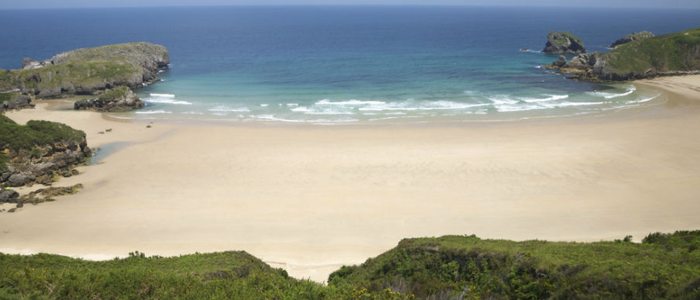
It is one of the wildest and prettiest beaches in Asturias and is also well known for the great atmosphere provided by the people who visit it. Because it is a cliff, which makes it rather difficult to reach, when you see the beach from above you will be sure to want to climb down. Its white sand, stretching for nearly 500 metres, makes it look idyllic. It is very popular with nudists and also surf-lovers, thanks to the fierce waves caused by the wind in the area.
3. Playa de Mataleñas, Santander
.jpg)
This beach is very near Santander, between Cabo Menor and Cabo Mayor, and it owes its beauty to its location, surrounded as it is by high cliffs. Even though the beach is isolated, a great many people visit it during the summer, which is easy to understand since it is one of the best beaches along this coast. It is accessed on foot, by way of steep steps. Its waters are clean and it has a lovely seaside promenade from where you can enjoy some unbeatable views.
4. Cala Estreta, Palamós, Girona
.jpg)
A picture postcard cove, ideal for anchoring boats and enjoying the transparency of the sea, it is perfect for snorkelling and watching a large number of fish. Access is difficult because you can only reach the beach on foot or by bike (in summer cars are forbidden) There is some privacy and maybe for this reason it is popular with nudists. The beach is very narrow - which is how it came by its name [Estreta, meaning narrow] - and on many stretches it is no more than two metres wide.
5. Playa Macarella, Menorca
.jpg)
This virgin beach emerges in the midst of a thickly forested area, filling the Menorcans with pride and offering pure delight to visitors. Its crystalline waters are a real pleasure that invite bathers to switch off from everything and rest. You can visit several caves in the area, one of which is at the entrance to the cove called “Es Castell de Macarella”. Less than 500 metres away is Cala Macarelleta, just as pure and pretty but slightly smaller, which makes it even more charming.
6. Dénia, Alicante
.jpg)
These beaches and coves will surprise you with every step you take. They all hold international certificates for quality and environmental management; a real guarantee in the services offered. In addition, along the coast of Denia you can find numerous flora micro-reserves. For example, the Cabo San Antonio Marine Reserve is of notable interest: a protected area that possesses an ecosystem with great natural wealth, which can be discovered by means of several underwater routes (subject to prior permission).
7. Playa de Mazarrón, Murcia
.jpg)
A lot of sun, warm, calm blue waters and the good weather all year long make Mazarrón (Murcia) the ideal place for resting. You immerse yourself in its depths, lose yourself in its coves and feel the emotion of water sports. The 35 kilometres of coast in the region mean there are beaches that will satisfy everyone's taste, from crowded, urban beaches to hidden beaches in natural areas, where an air of solitude reigns.
8. Playa de los Muertos, Almería
.jpg)
Located at the northernmost end of the Cabo de Gata Natural Park – Níjar, it is a totally straight beach, as if it had been drawn with a ruler. It affords wonderful views and its waters are an amazing blend of bluesThere is also a small island which is regularly used by nudists. According to local belief, the colour is due to the whirlpools and currents of the water, so if you decide to visit it you must take care not to have a nasty surprise while you are bathing.
9. Playas del Cabo de Roche, Cadiz
.jpg)
A group of beaches that stand out for their coves, well known for their incredible sunsets. Each one has its own charm: on the one hand, there is Playa de los Bateles, a large, family beach with a seaside promenade, spectacular for its size and the quality of the sand. And, on the other, the jewel in the crown of this coast, the Playa de Castilnovo, which is practically virgin and with a wild appearance that is ideal for surfing. Considered to be a Place of Community Interest, it is a natural beauty spot with walking access to the estuary of the Salado river.
10. Playa del Papagayo, Lanzarote

It is one of the most spectacular beaches in the Canary Islands and is situated inside Los Ajaches Natural Monument. It is a stunningly beautiful cove sheltered by the cliff walls that surround it on both sides. You need to go well prepared to spend a day there: although it is easy to access, because it is some way from the nearest towns, there are few services around. Its golden sand and crystalline water will make you feel as though you are in paradise.
 0
Like
Published at 7:48 PM Comments (0)
0
Like
Published at 7:48 PM Comments (0)
Best Beaches from Castellón to Alicante
Thursday, May 15, 2025
Lying on the sand and enjoying the sun, diving into the refreshing waters of the Mediterranean, playing volleyball, taking a pedal boat out to sea, working out in one of the fitness areas, eating an ice-cream or taking a sailing course are just some of the activities you can enjoy on Valencia's endless beaches. Admittedly, Andalucia and Murcia has some wonderful spots but some of my favourites are to be found in the Valencian Community. Playa La Granadella tops the list because it is certainly my favourite in the region as I am not really a fan of sand and Granadella is a shingle beach. But the rest of the list is in no real order. So I hope this helps to show you around a little and maybe even gives you ideas for alternative places to visit when on holiday along the coast of Valencia.
1. Playa de la Granadella de Jávea (Alicante)
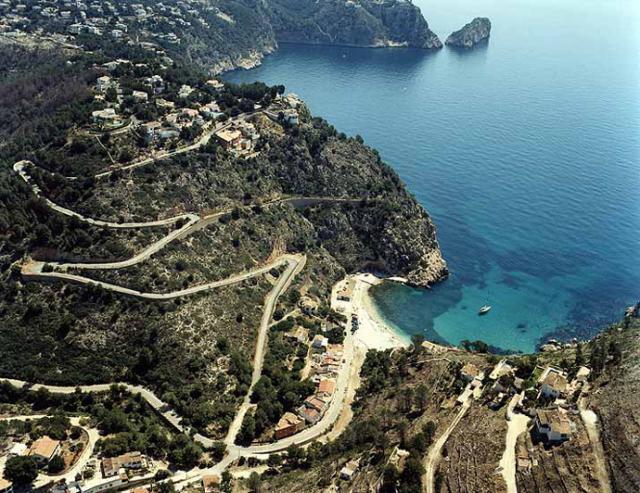
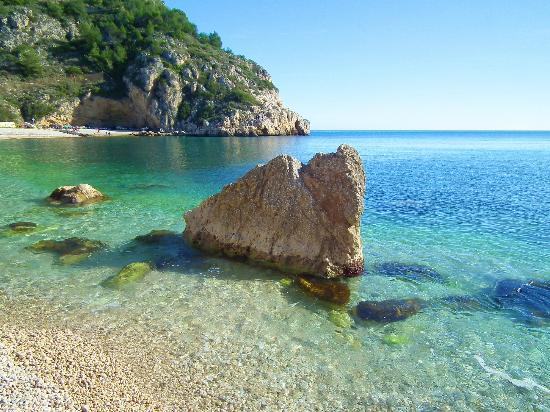

Ver mapa más grande
2. Playa Norte de Gandia (Valencia)
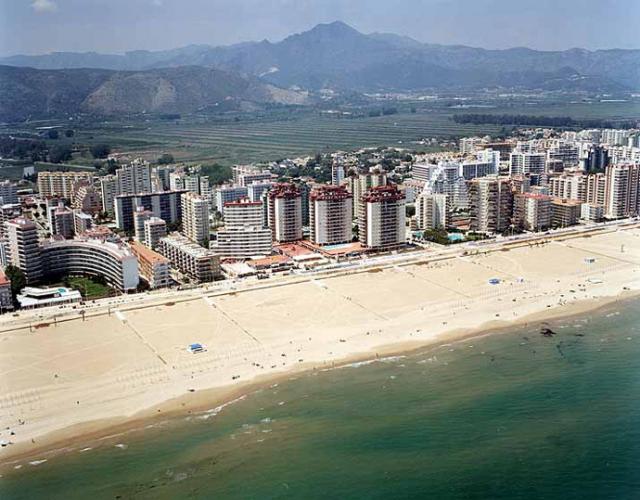
Ver mapa más grande
3. Playa de Levante de Benidorm (Alicante)
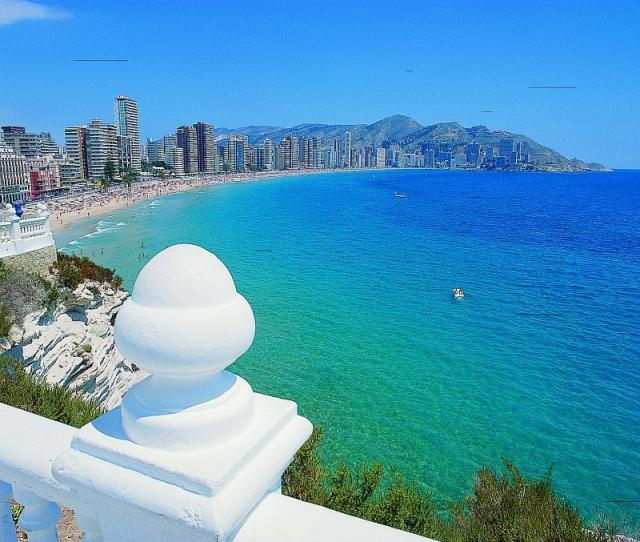
Ver mapa más grande
4. Playa del Portet de Moraira-Teulada (Alicante)

Ver mapa más grande
5. Playa Norte de Peñíscola (Castellón)
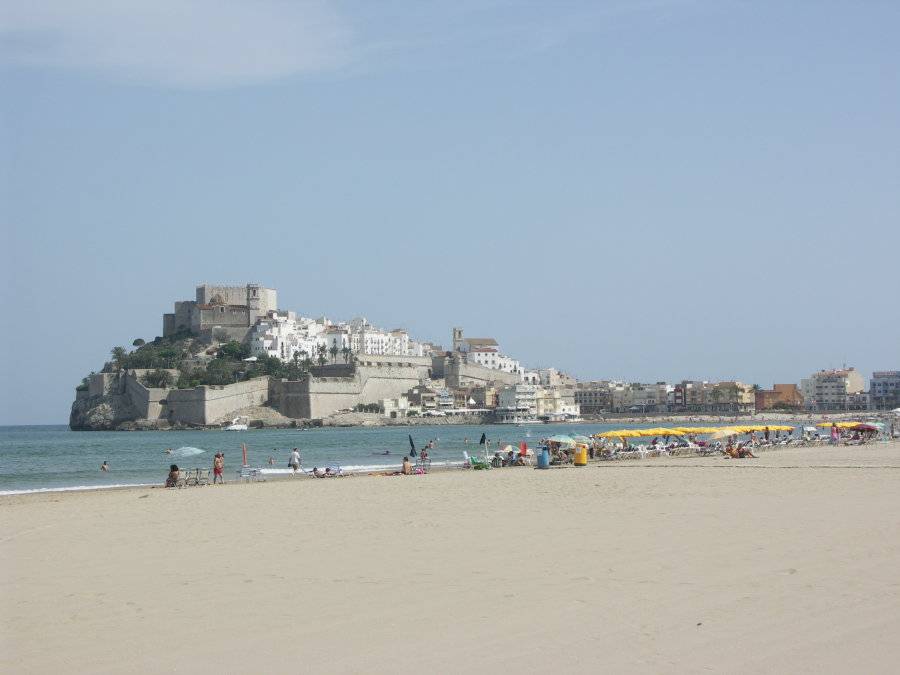
Ver mapa más grande
6. Playa de Cala del Penyal de Calpe (Alicante)
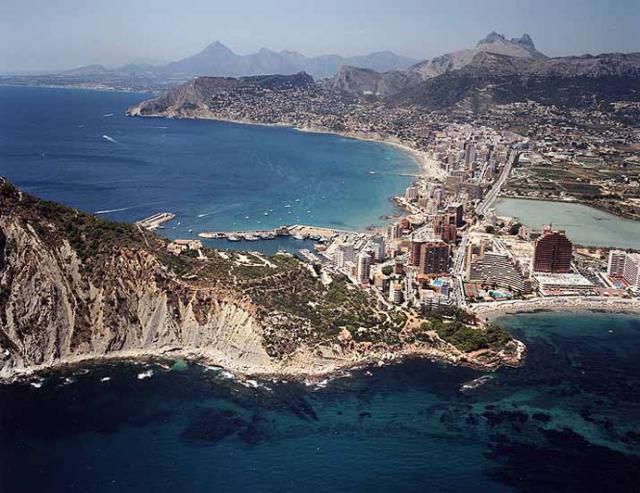
7. Playa de El Russo de Peñíscola (Castellón)
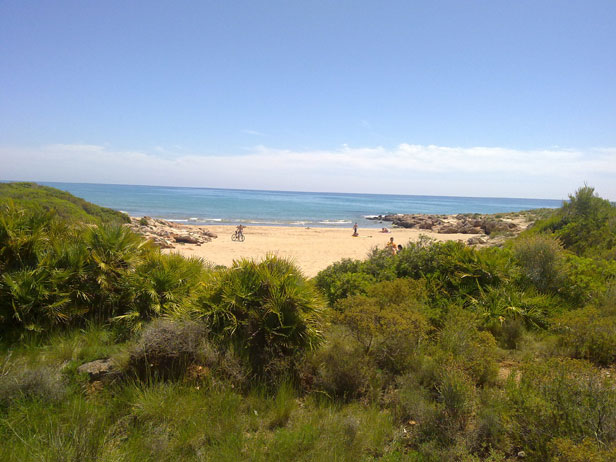
Ver mapa más grande
8. Playa de Canet d´En Berenguer (Valencia)
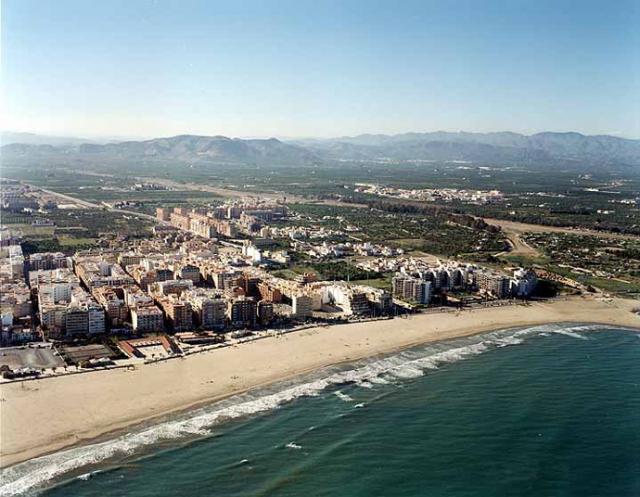
Ver mapa más grande
9. Playa de Els Terrers de Benicàssim (Castellón)
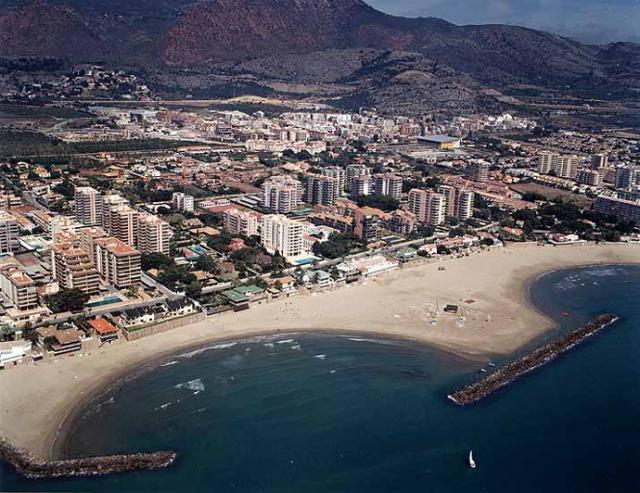
Ver mapa más grande
10. Playa de la Concha de Oropesa del Mar (Castellón)

Ver mapa más grande
 0
Like
Published at 12:01 AM Comments (0)
0
Like
Published at 12:01 AM Comments (0)
The Most Beautiful Villages in Navarra
Saturday, May 10, 2025
Navarra has some of the most beautiful villages in the country, not often a region that foreigners really think of visiting, but it really must be considered as there is so much to see. Here are 10 of the most beautiful villages worth visiting...
1. Olite
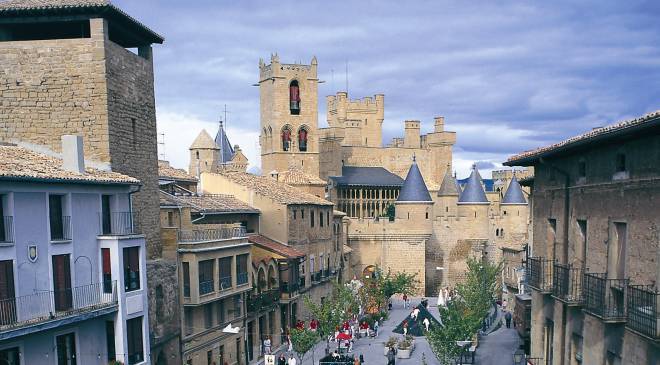
The sleek and harmonious silhouette of the Castle-Palace stands out against the skyline of Olite, a small town in the centre of Navarre just 42 kilometres south of Pamplona that was the seat of the Royal Court of the kingdom in the Middle Ages. The thick walls and crenelated towers of the Palace were home to monarchs and princes. Declared a national monument in 1925, it is the best example of civil Gothic architecture in Navarre and one of the most notable in Europe.
A walk through the narrow streets of Olite will take you past noble stone houses with coats or arms on their facades and grandiose wooden eaves, mediaeval galleries and splendid churches, and the Roman wall surrounding the town. Its Mediterranean climate has also made Olite a wine capital. Visit its bodegas (wineries) and try their wines. Let yourself be guided, the town will take you back to an era of tournaments, kings and princesses, wizards and jugglers, falconers and archers; they all return to Olite every August for a Mediaeval Fair.
2. Roncesvalles
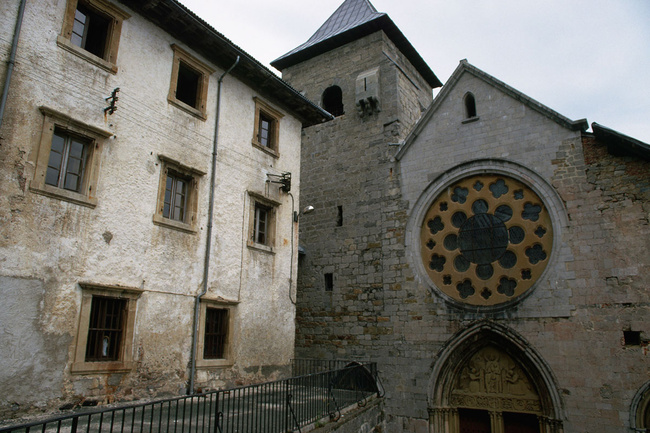
The collection of the historic buildings in Roncesvalles, located in the westernmost side of the Pyreneen mountain range, are erected on the bottom of the southern slope of the Ibañeta hill and near the wide plain of Auritz- Burguete.
A place for the pilgrims to rest after the rough ascent from the lower Navarre valleys, "The Collegiate church of Santa María de Roncesvalles" is surrounded by some mountains like: Astobiskar (1266 m.) and Ortzanzurieta ( 1570 m), distinguished because they are the oldest territories of Navarra, more than 450 million years old.
3. Puente La Reina
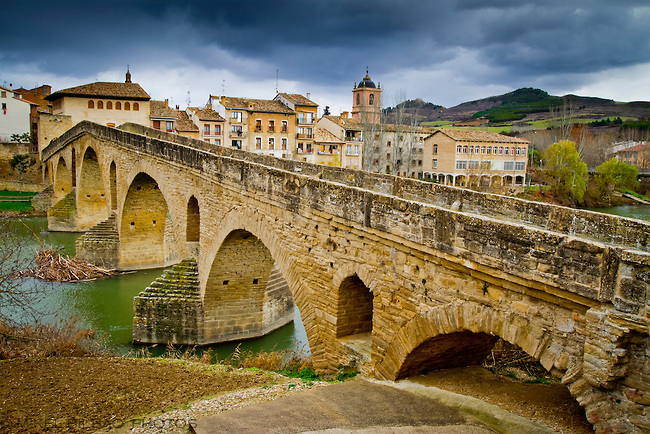
Puente la Reina, "the crossroads of the ways", is a medieval town where the two main routes on the Pilgrim's Way to Santiago de Compostela converge. It is one of the enclaves with the greatest affinity with Compostela in Navarre. The constant transit of pilgrims, the scallop shells and the walking sticks all form part of the urban landscape of this town, a magnificent example of a "street-based" town just 24 kilometres south-west of Pamplona.
Walking along the narrow Rúa Mayor is a very pleasant exercise that allows you to discover architectural gems such as the churches of the Crucifix, St. James and St. Peter and beautiful buildings peppered with details of the influence of the Pilgrim's Way. However, there is no doubt that the Romanesque bridge across the river Arga is the most amazing sight of all. It is one of the most beautiful and distinguished examples of Romanesque architecture on the way to Santiago and is what gives its name to this town of barely 2,500 inhabitants.
4. Ujué

Lost up on the heights of a plateau with no rivers to refresh it and no trees to shelter it, seemingly intoxicated with its solitude, stands Ujué, a delightful medieval village of narrow streets that climb steeply upwards to reach, at the top, the Sanctuary-Fortress of Santa Maria de Ujué. Located in the Central Zone, Ujué is one of the most important places of worship in Navarre and a spectacular lookout point over the Pyrenees and riverside plains.
The Sanctuary, a national monument, is one of the most important examples of medieval architecture in Navarre, and is at the centre of a beautiful legend. On your journey, lose yourself in the maze-like layout of this tiny village of just 300 inhabitants; stroll slowly along its cobbled streets and don't miss the opportunity to try the delicious migas de pastor ('shepherd's breadcrumbs'). There are very few places that make them like they do in Ujué.
5. Elizondo
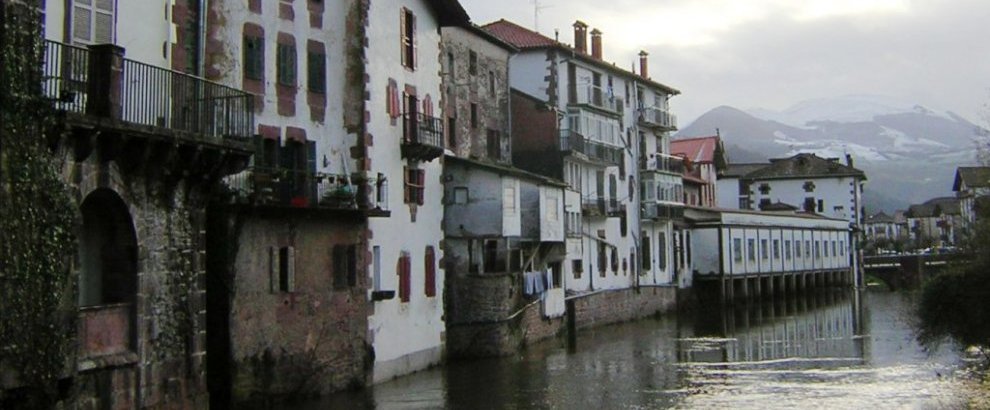
Elizondo, the capital of the Baztan valley, will amaze you with its numerous mansion houses and palaces. Its most emblematic building is the Baroque palace of Arizkunenea, but there are also other monuments of artistic interest such as the town hall, the Datue Palace, the Viceroy's house and the church of Santiago. Set in idyllic natural surroundings, the hustle and bustle that typify Elizondo have made this locality the valley's inhabitants' favourite place for holding fairs and markets.
One of the most long-standing traditions is the Baztandarren Biltzarra, a festival of colourful dances and processions that brings together all the villages in the valley. On your visit to Elizondo, be sure to try its famous urrakin egina (chocolate with whole hazelnuts). Elizondo lies at the geographical and nerve centre of the Baztan valley . Located in the north of Navarre, the valley encompasses fifteen towns within its municipal boundaries, which are dotted throughout the luxuriant green landscape of the Atlantic Pyrenees.
6. Sanguësa
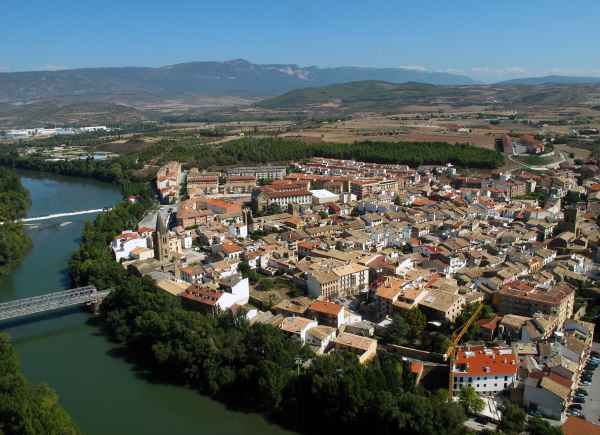
A border post on the Pilgrim's Way and a hospitable and monumental town, Sangüesa is a mixture of the mountains and the plains, a place to see and experience. Located 44 kilometres from Pamplona and with a population of just over 5,000, the most important town in medieval Navarre is well known thanks to the Pilgrim's Way to Santiago de Compostela and its architectural treasures, particularly the facade of the church of Santa María, a superb example of Romanesque architecture that has been declared a National Monument. Its interesting civil buildings, churches and convents evoke epochs of splendour and reveal a town that is very closely linked to its traditions.
On January 6th every year the Auto Sacramental de los Reyes Magos (allegorical religious play about the Three Wise Men) takes place, one of the five that has been conserved in Spain. Stroll through the old streets of Sangüesa and stop to take a look at every one of its splendid buildings; take part in its medieval traditions and try its famous pochas (succulent white beans). In a land of transition between the first peaks of the Pyrenees and the plains along the river Ebro, Sangüesa stands on the banks of the river Aragón on slightly raised ground in the eastern part of the Central Zone of Navarre, 44 kilometres from Pamplona.
7. Artajona
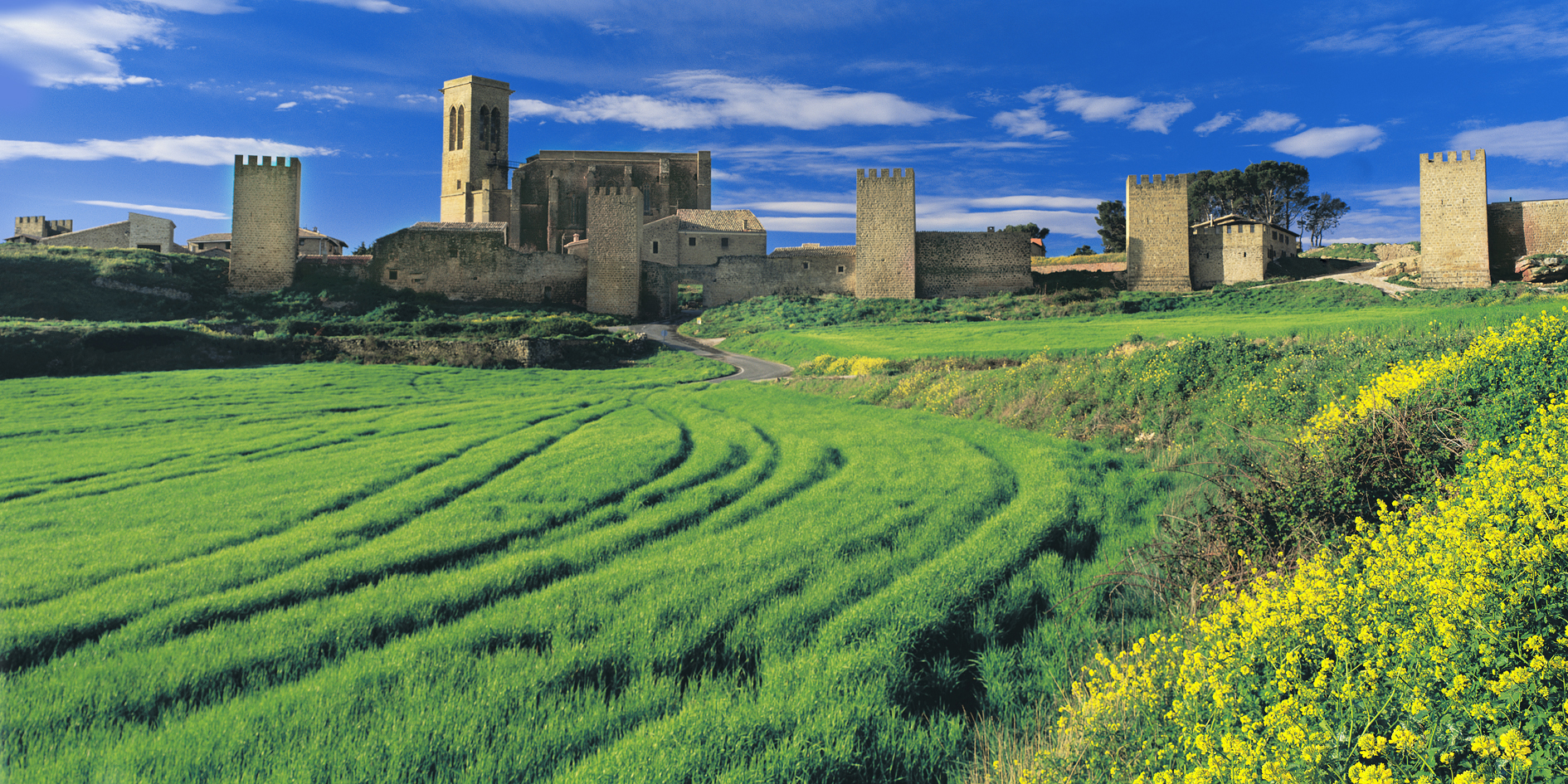
A magnificent medieval fortification crowns the top of the hill on which Artajona stands, a small village 30 kilometres from Pamplona which invites you to close your eyes and step back into a past inhabited by monarchs, noblemen, bishops and popes. This stunning eleventh-century fortress, known as "El Cerco", rises up imposingly over the village that descends down the slopes to the plain in a maze of narrow, cobbled streets, marked along the way by monumental houses and palaces.
On your journey you will discover a town of 1,700 people which, as well as "El Cerco", still preserves other buildings of interest such as eighteenth-century palaces, the Gothic church of St. Peter and, on the outskirts, the basilica of Our Lady of Jerusalem and the chapel of St. Bartholomew. You can also discover why its bells and the "fork and sickle race" are so important. The walls of Artajona, a small town in the Central Zone halfway between Puente la Reina and Tafalla, conceal a wealth of history that will take you back to the Middle Ages, times of territorial conquest and marriages of convenience when the town became the wedding present of King García Ramírez to his wife, Lady Urraca.
8. Estella - Lizarra
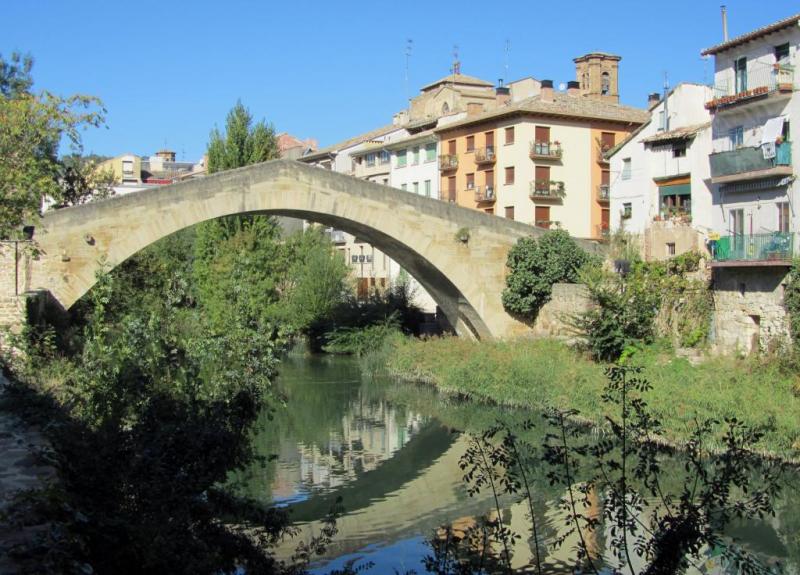
Half way between Pamplona and Logroño, in an area between the mountains and the plains, lies Estella, a historic city that came into being when pilgrims were travelling along the Pilgrim's Way to Santiago de Compostela in large number. In the 15th century it was known as "Estella the elegant" and to the present day it continues to live up to this epithet. It is a romantic city that places great value on its palaces, stately homes, churches, convents, bridges and beautiful buildings, which have earned it the nickname of the "Toledo of the North".
The city of 13,000 inhabitants will surprise you with its flourishing commercial life and bustling Thursday market, its passion for music and theatre, as well as its impeccable cuisine. Strolling through the city you will pass pilgrims and visitors eager to explore the old streets of the Franks and the Jews and see proof that the phrase coined by Aymeric Picaud is as true today as it was in the 11th century: "Estella is a city of good bread, excellent wine, much meat and fish and all kinds of pleasures."
9. Ochagavia
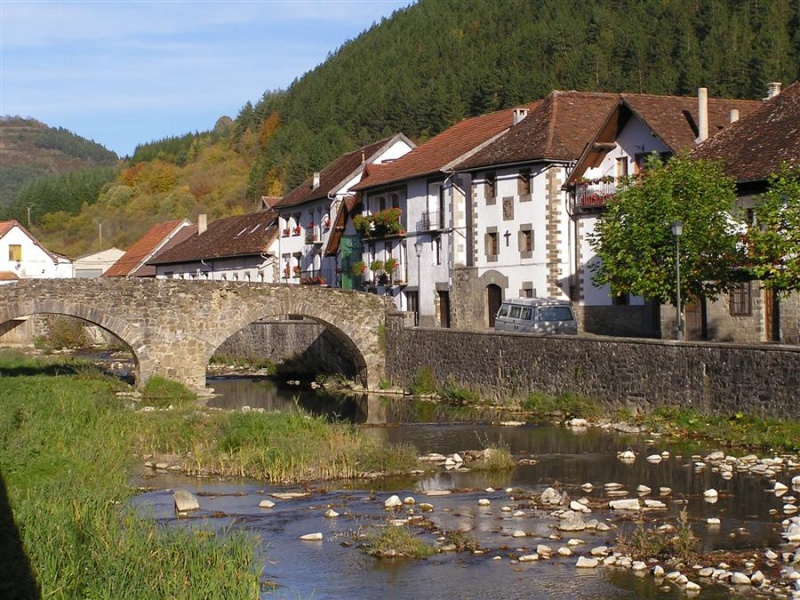
Ochagavía is the perfect photograph, the one that always looks right; the day or the light conditions do not matter. It is the picture postcard of the Pyrenees of Navarre, with its cobbled streets, its well-kept houses with steep roofs and the river with an old mediaeval bridge crossing it. The stone church, crowned by a robust and elegant tower, is an interesting perspective that breaks up the skyline. A landscape of high mountain peaks and dense forests complete the image, in which the very ancient dances in honour of the Virgin Mary of Muskilda must be present.
The town of Ochagavía is located 764 metres above sea level at the northernmost point of the Pyrenean valley of Salazar, in north-east Navarre. Surrounded by high peaks and beech and Scots pine forests, it is one of the most picturesque places in the Navarrese Pyrenees thanks to the architecture of its caseríos (large houses) and its location at the confluence of the Zatoia and Anduña rivers, which join here to form the river Salazar.
10. Amaiur/Maya

A picturesque one-street village that receives the visitor with its peculiar entry arch. The people built their houses along the route of the Pilgrims' Way in the Baztan valley. The lack of alignment and uniformity of the façades avoids monotony and leads to some excellent perspectives. The characteristic reddish colour of the stone from the quarries at Almándoz impregnates, as in the rest of the Baztan valley, its houses.
Noble house architecture has left some magnificent examples in the village, such as Palacio Arretxea or Casa Arriada, where council meetings were held in the 16th century. One of the most emblematic spots in Amaiur/Maya is located at the entry to the village. It is a restored mill that still operates, and where visitors can buy corn or wheat flour or taste recently baked talos, fine corn flour pancakes that are eaten with other products such as cheese, chocolate, or chistorra (spicy sausage).
 0
Like
Published at 12:06 AM Comments (0)
0
Like
Published at 12:06 AM Comments (0)
My Favourite Beaches around Spain
Friday, May 2, 2025
Spain's coastline is peppered with spectacular beaches and I most certainly haven't visited them all...but here are my favourite beaches to date! Why not share your favourite ones in the comments section!
1. Es Talaier (Ciudadela, Menorca)
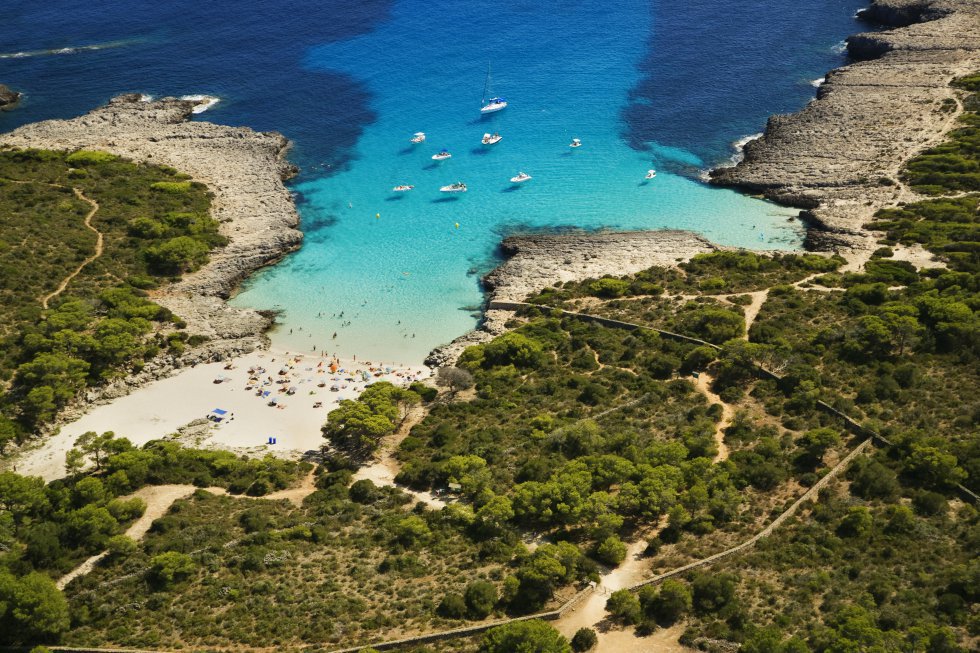
After a 15-minute walk from Son Saura, everything conspires to push the traveller into this voluptuous pool of translucent waters that shine under the bright sun. Its pine groves are seductive like snake’s eyes, and the beach is free of tourist boats.
2. Cala Fonda, Waikiki (Tarragona)

The proximity of a petrochemical compound only underscores the value of this Mediterranean relic. It is necessary to park at the restaurant Mirall d’Estiu, on Larga beach, and walk for two kilometers. The pine groves then give way to an uncomfortable final stretch before the actual beach is reached. Some walk about in the nude, others go for a swim. Everyone talks wonders about this place.
3. Escorxada and Fustam (Es Migjorn Gran, Menorca)
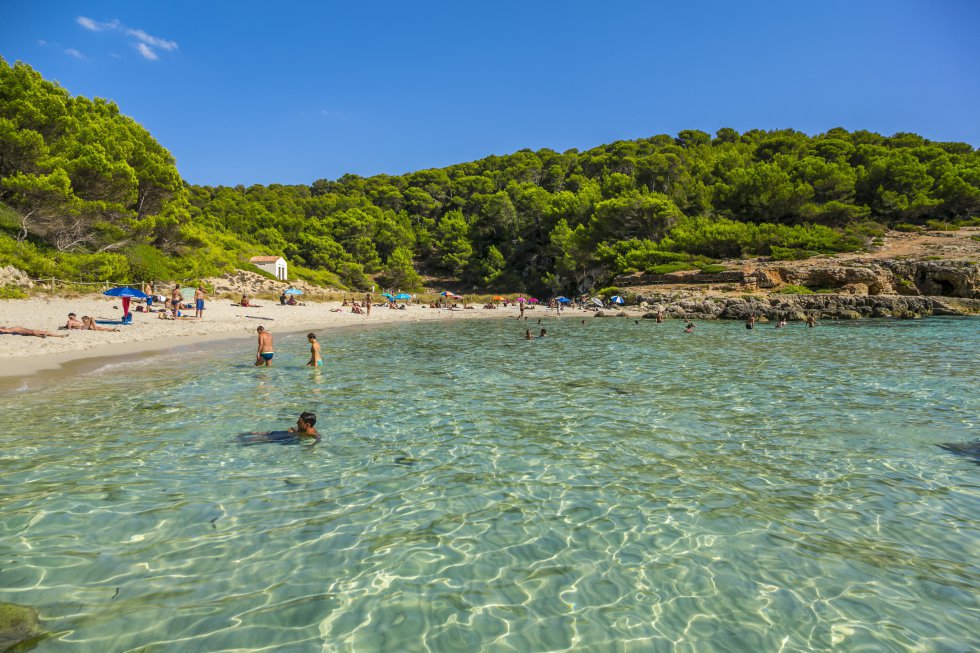
Water taxis were created for those who dislike walking. Taximar (www.menorcataximar.com), based in Cala Galdana, organizes trips to the remote coves of Escorxada and Fustam, with stops at Trebalúger and a couple of sea caves. The parasol-and-cooler-carrying traveler can then choose a beach to enjoy for the next five hours, until pick-up time. The cost of the service is €25.
4. La Granadella (Xàbia, Alicante)
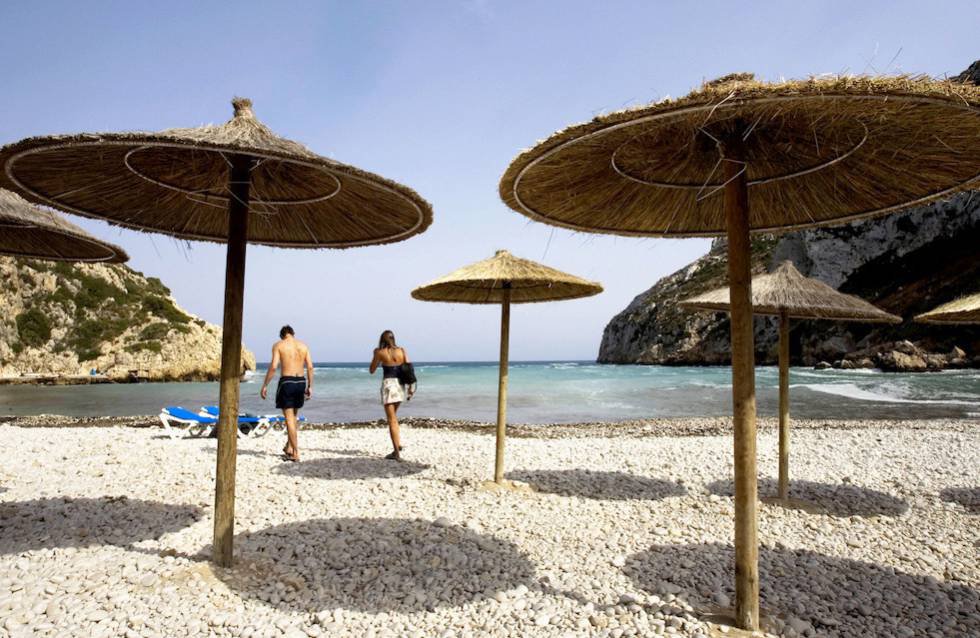
There is nothing quite like enjoying the majestic Mediterranean early in the morning outside high season, and to practice your swimming strokes as you listen to the rhythmic sound of the pebbles being swept by the waves. Sur restaurant (www.restaurantesur.com) has its own boat and vegetable garden.
5. Melide (Cangas de Morrazo, Pontevedra)
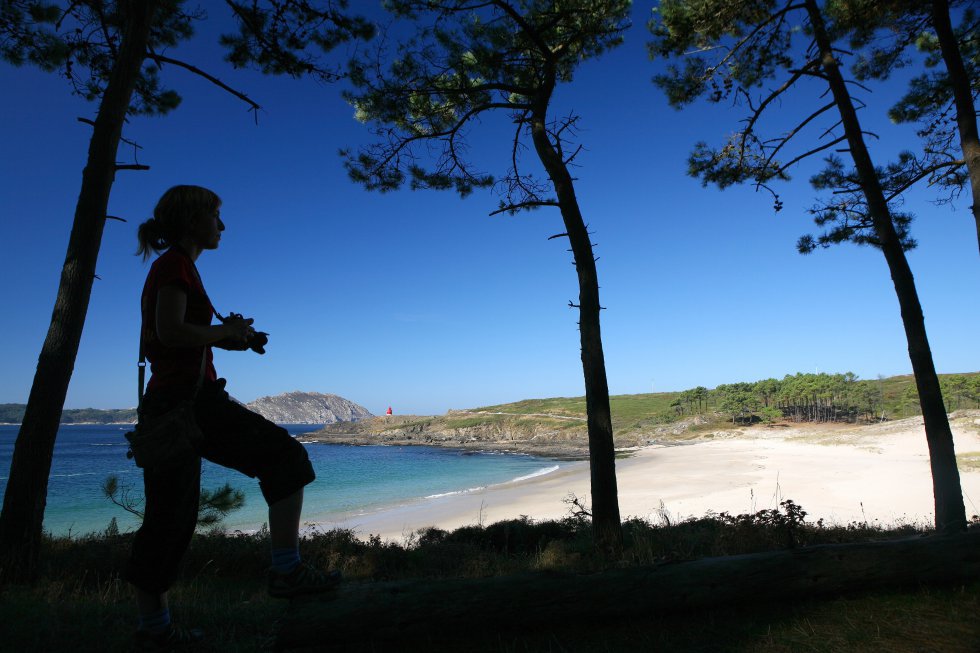
To say Melide is to evoke the Cíes islands: there are only three kilometers separating Melide from the national park, and no need to stand in line at the ship docks. Both share a creamy-colored sand, freezing waters and loads of pine trees. Its remote location ensures that the masses stay away. A foot trail begins in Donón and ends in Punta Subrido, home to Pedro Piñeiro’s beach bar.
6. Playazo de Rodalquilar (Níjar, Almería)
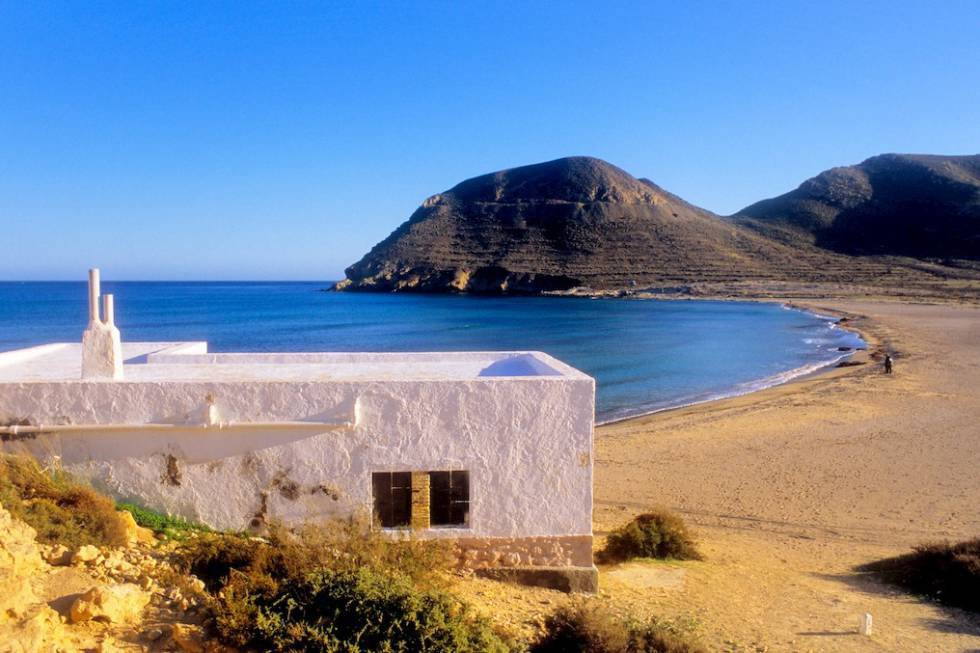
Located inside Cabo de Gata, this is a crowded beach (access is easy) but its sand is a joy to behold, and it is set against a cliff of such a pale yellow as to appear white. It was the filming location for the 2015 movie ‘Lejos del mar’ (or, Far from the sea), by Imanol Uribe. The Los Patios hotel is nearby (www.lospatios.net). It is a good idea to walk the 1.4 kilometer trail from San Ramón castle to Cuervo cove.
7. Güí-Güí (La Aldea de San Nicolás, Gran Canaria)
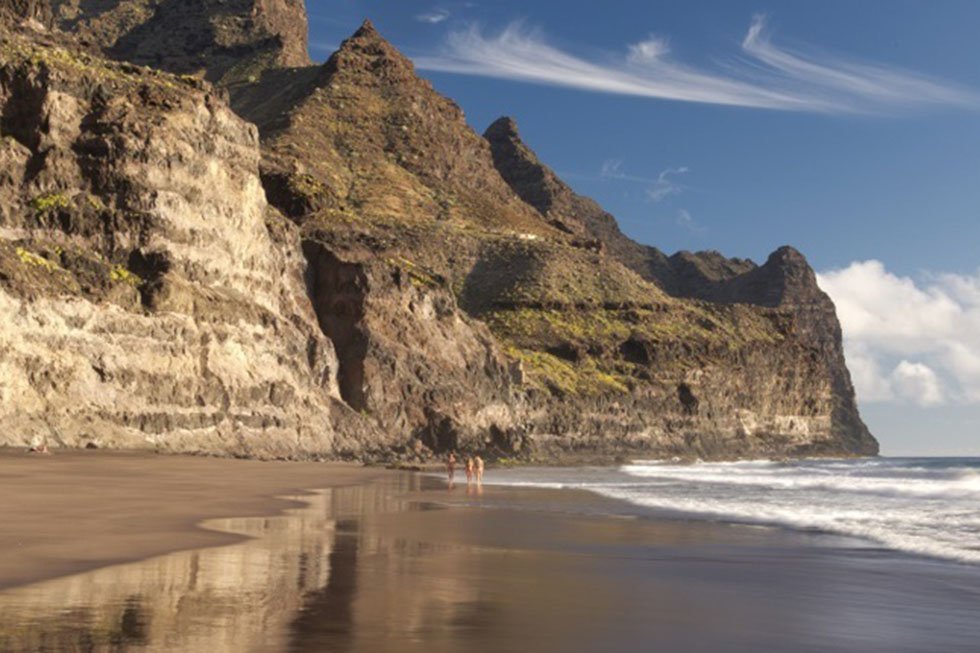
This is the beach at the end of the (Canary Islands) world. The two-and-a-half hour mountain trek from Tasartico is worth it (remember to bring at least two liters of water per trekker). Anyone who makes it to these two strips of sand with views on Mount Teide should be eligible for a certificate of achievement.
8. Aigua Xelida (Palafrugell, Girona)
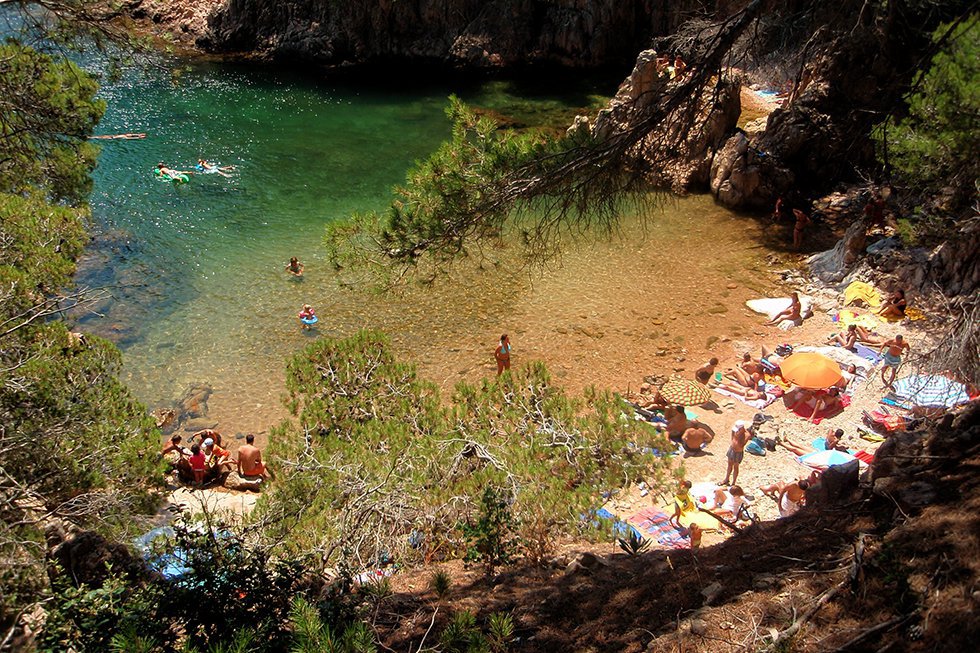
The pungent smell of the pine grove, its narrow shape, the fact that the nearby residential estate is nearly unnoticeable... Everything conspires to make us disconnect from the outside world. A plaque on the fisherman’s shack reminds visitors about the times when the writer Josep Pla spent time here, drawing inspiration from the coastline and the wind to write about a legendary, extinct Costa Brava that we may nevertheless explore in kayaks (www.kayakingcostabrava.com) from the homebase of Tamariu.
9.Xarraca (Sant Joan, Ibiza)
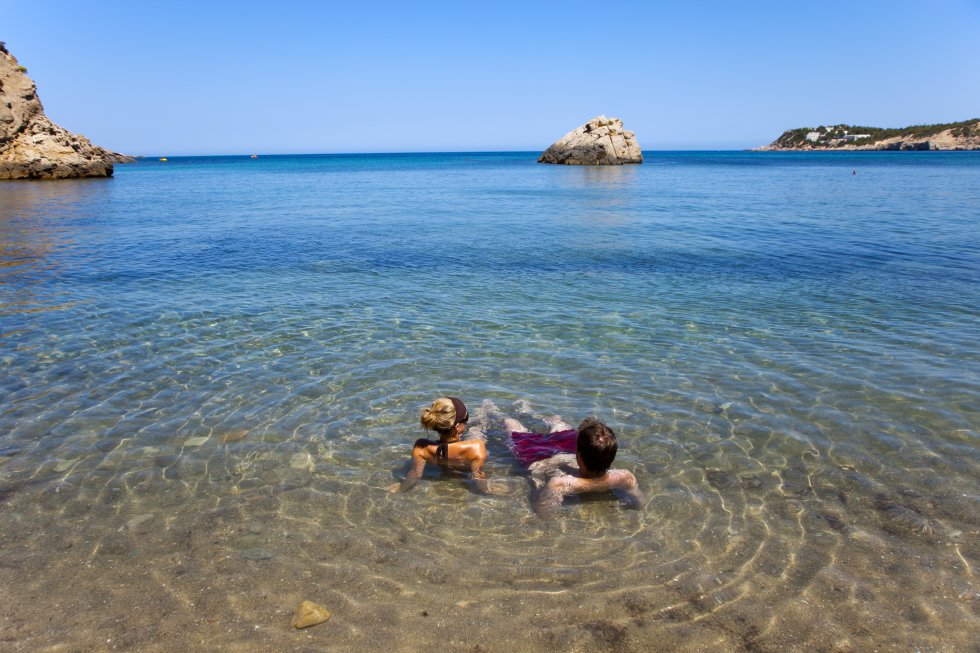
This cove in northern Ibiza is located next to the road, and its waters are of an arresting turquoise color. This is a pebble beach, meaning that it is good for snorkeling and paddle boats. Rising up from the water near the shore is Penya Grossa, a rock that doubles as a diving board, and the nearby Penya Petita, a small reef where swimmers stop for a break.
10. Barayo (Valdés / Navia, Asturias)

Anyone approaching Barayo from Navia will be treated to one of the parking lots with the most sublime views on the Cantabrian coast: salt flats, marshes, dunes, tall grass and cane fields, pine trees and eucalyptus on a cliff.
 3
Like
Published at 11:46 PM Comments (2)
3
Like
Published at 11:46 PM Comments (2)
Spam post or Abuse? Please let us know
|
|